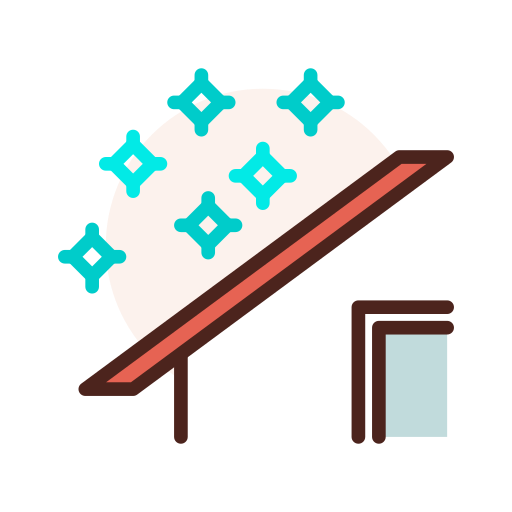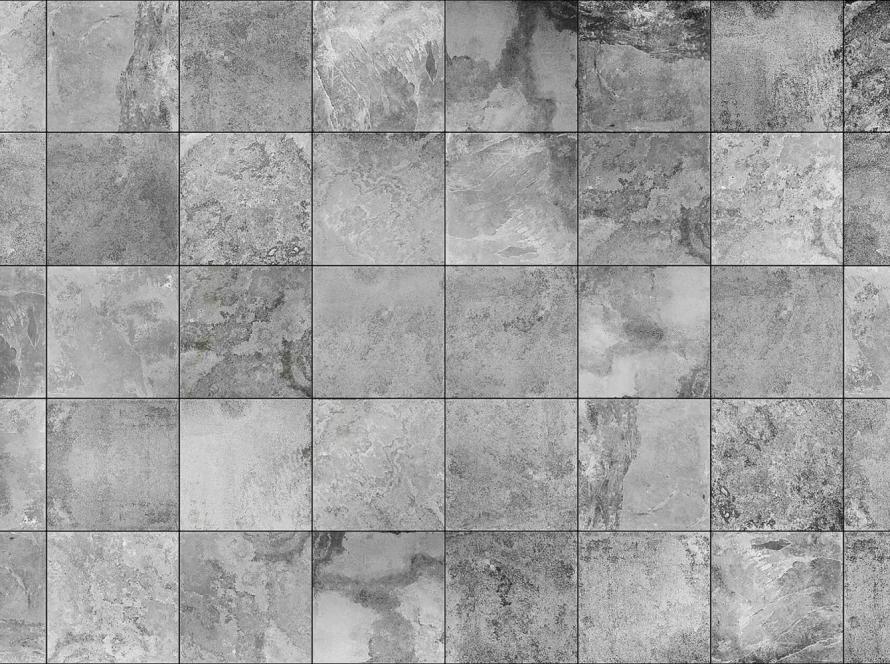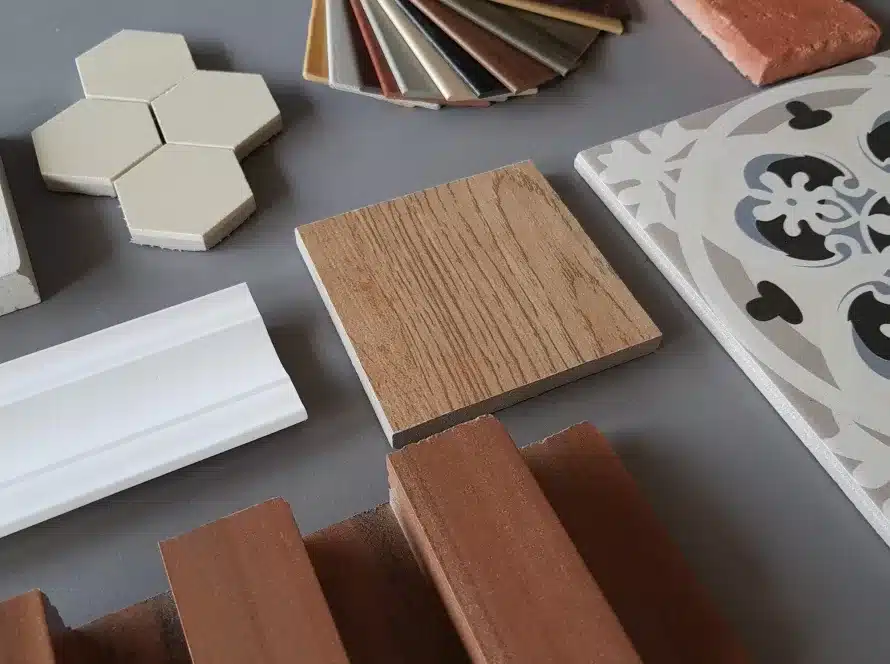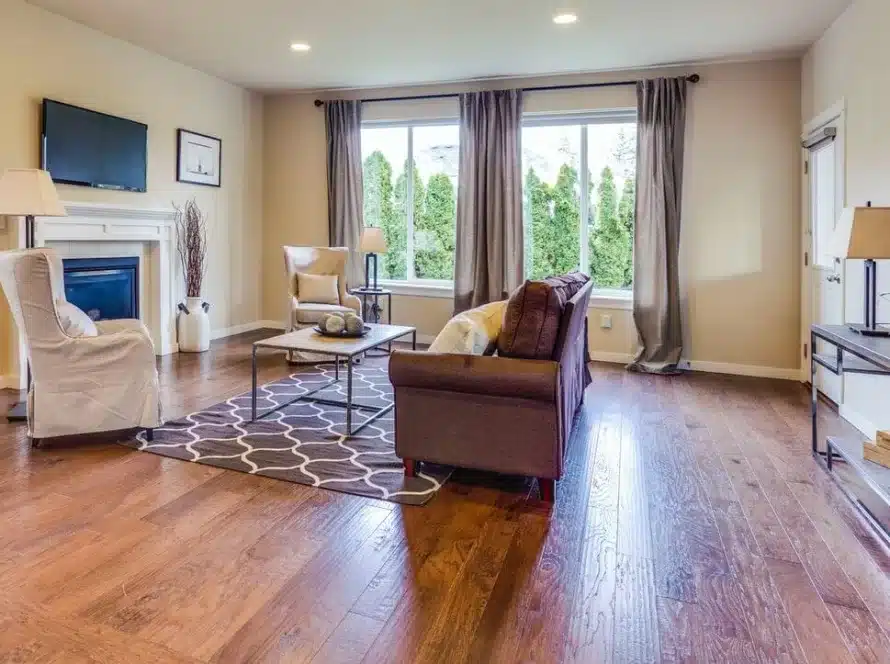If you’re considering upgrading your home’s flooring, you’ve probably heard about engineered hardwood flooring. It’s a popular choice for many homeowners looking to add a touch of classic elegance to their living spaces.
Engineered hardwood flooring offers the timeless appeal of hardwood but with some unique characteristics. In this blog, we’ll walk you through the pros and cons so you can make an informed decision for your home.
Pros of Engineered Hardwood Flooring
Engineered hardwood flooring adds a cozy touch to any room, giving it a warm and inviting feel. It’s perfect for creating a comfortable atmosphere, whether you’re relaxing or hosting friends. If you like the look of hardwood but need to stick to a budget, engineered hardwood flooring is a great option. It gives you the beautiful appearance of solid hardwood at a lower cost, making it a smart choice for many homeowners.
Here are some other pros you can look forward to with this type of flooring:

Wallet-Friendly Material Costs
Solid hardwood flooring is renowned for its beauty and durability, but it often comes with a hefty price tag. The cost of solid hardwood can be prohibitive for many homeowners. Especially if you have a large area to cover or are working within a tight budget.
Engineered hardwood is made from layers of real wood veneer bonded together with adhesives and topped with a protective finish. While it still contains real wood, the use of less expensive wood species for the core layers helps reduce overall material costs compared to solid hardwood.
Installing solid hardwood flooring can be labor-intensive and may require additional materials such as:
- Nails
- Adhesives
- Subfloor preparation
Engineered hardwood, on the other hand, is often easier and faster to install, resulting in lower installation costs. It can be floated over an existing floor, glued down, or installed using a click-lock system. In turn, this reduces the need for specialized tools and labor.
Installation Versatility
When it comes to installing engineered hardwood flooring, you’ll find that it offers a level of flexibility that solid hardwood often can’t match. This versatility stems from its construction, which typically consists of multiple layers of wood pressed together in a cross-grain pattern.
One of the primary benefits of this layered construction is that it provides increased stability and resistance to changes in temperature and humidity. As a result, engineered hardwood flooring can be installed over a variety of subfloor types. This includes:
- Concrete slabs
- Plywood
- Existing flooring like tile or vinyl
Enhanced Durability
The layers of wood are arranged in a cross-grain pattern, which counteracts the natural tendency of wood to expand and contract with changes in temperature and humidity. This structure minimizes the risk of warping, cupping, or buckling that can occur with solid hardwood floors.
Moreover, because it is constructed from multiple layers of wood, engineered planks are less likely to have natural imperfections such as knots or blemishes. This results in a more consistent look across the entire floor surface.
Cons of Engineered Hardwood Flooring
While engineered hardwood flooring has its benefits, it’s essential to consider some potential drawbacks. Here are some things to think about before making a final decision:
Initial Cost Considerations
Engineered hardwood flooring typically falls between the price range of solid hardwood and other alternatives like laminate or vinyl flooring. While it can offer a more budget-friendly option compared to solid hardwood, it’s essential to consider the initial cost when planning your flooring project.
Installation costs vary depending on:
- Quality of materials
- Thickness of the top layer (veneer)
- Species of wood used
- Brand reputation
- Size of the space
- Subfloor condition
Higher-quality engineered hardwood with thicker top layers and premium finishes will generally come with a higher price tag. While engineered hardwood can be easier to work with, hiring a professional installer is still recommended to ensure proper alignment and a long-lasting result.
Limitations in Sanding and Refinishing
Engineered hardwood flooring consists of a thin veneer of real hardwood bonded to layers of plywood or high-density fiberboard (HDF). The thickness of this top layer (aka the wear layer), typically ranges from 0.6mm to 6mm.
The ability to sand and refinish engineered hardwood depends primarily on the thickness of this wear layer. Thicker wear layers provide more flexibility for sanding and refinishing. Whereas thinner layers may not withstand the process as well. Attempting to refinish such flooring could result in wearing through the veneer and exposing the core material. Leading to irreversible damage.
For engineered hardwood with a thicker wear layer (4mm or more), sanding and refinishing can be an option. However, even with a thick wear layer, excessive sanding can risk damaging the underlying layers. Affecting the structural integrity of the flooring.
Scratches and Dents
The quality of the finish applied to the engineered hardwood plays a significant role in its resistance to scratches and dents. High-quality finishes provide a durable protective layer that helps guard against everyday wear and tear.
Areas of your home with higher foot traffic are more prone to scratches and dents. This includes areas such as
- Hallways
- Entryways
- Living rooms and dens
Additionally, furniture legs, pet claws, and sharp objects can cause damage over time. Especially if proper precautions, such as felt pads or area rugs, are not used.
Moisture Damage in Extreme Environments
While engineered hardwood is more resistant to moisture compared to solid hardwood, it’s important to recognize its limitations. Especially in extreme environments or areas prone to moisture exposure.
In areas with high humidity levels engineered hardwood flooring may be susceptible to moisture damage if not adequately sealed or if water seeps through gaps in the flooring or subfloor. This includes common areas like:
- Basements
- Bathrooms
- Kitchens
Before installing engineered hardwood flooring, consider the climate and location of your home. Homes in coastal or humid regions may require additional precautions to protect against moisture-related issues.
Engineered Hardwood Flooring Maintenance

Maintenance for engineered hardwood flooring is relatively easy compared to other flooring options like solid hardwood or carpet. However, it still requires regular care and attention to keep the material in good condition. With simple cleaning routines and preventative measures, you can effectively maintain engineered hardwood without too much difficulty.
Sweep or vacuum your floors regularly to remove dirt, dust, and debris that can scratch the surface. Use a damp mop or hardwood floor cleaner recommended by the manufacturer to clean up spills and stains promptly.
Place felt pads under furniture legs to prevent scratches and dents caused by movement. Avoid dragging heavy furniture across the floor. Instead, consider using rugs or mats in high-traffic areas to protect the flooring.
Steer clear of abrasive cleaners, wax-based products, and steam mops. These can damage the finish and wear down the protective layer of the flooring. Stick to manufacturer-recommended methods to preserve the integrity of your floors.
Lastly, periodically inspect your flooring for signs of wear, damage, or moisture issues. Addressing these issues promptly will prevent them from worsening and causing further damage to your home.
Design Options for Engineered Hardwood
When considering engineered hardwood flooring for your home, you’ll find a wide range of design options to suit your style and preferences. Engineered hardwood is available in various wood species. Each offers a unique grain pattern, color, and characteristics.
From classic oak and maple to exotic species like Brazilian cherry and acacia. This allows you to choose a wood species that complements your home’s aesthetic. Engineered hardwood also comes in different surface finishes. This includes:
- Matte
- Satin
- Semi-gloss
- High-gloss options
Engineered Hardwood vs. Laminate
For many homeowners, laminate flooring is often considered alongside engineered hardwood. You may be wondering the same. Here’s how they stack up against each other:
Key Similarities Between Engineered Hardwood and Laminate
- Both offer a cost-effective alternative to solid hardwood flooring
- They come in a variety of styles and designs, mimicking the look of natural wood
- Installation for both types is typically DIY-friendly, with options for floating installations
Durability, Aesthetic Appeal, and Longevity
- Engineered hardwood flooring tends to have a more authentic wood look and feel compared to laminate, which can sometimes appear artificial
- Engineered hardwood is generally more durable and long-lasting than laminate and can be sanded and refinished to extend its lifespan
- Laminate flooring, while resistant to scratches and dents, may not hold up as well to moisture and humidity compared to engineered hardwood
Considerations for Choosing Between the Two Options
- If you prioritize a natural wood appearance and long-term durability, engineered hardwood flooring may be the better choice
- For areas prone to moisture or heavy foot traffic, laminate flooring might be a more practical option due to its resistance to wear and tear
- Budget considerations and personal preferences for aesthetics and maintenance requirements should also factor into your decision-making process
Making Your Flooring Decision

Compare Quotes from Top-rated Flooring contractors in your area.
As you weigh the pros and cons of engineered hardwood flooring, be sure to consider the practical aspects that fit your lifestyle and budget.
At Alpha Living, we understand the importance of making informed decisions for your home improvement projects. Our network of highly-vetted contractors are dedicated to ensuring your home improvements meet your needs. No matter your aesthetics, repairs, or goals.
Enter your zip code to find a local contractor and take the first step towards transforming your home into the perfect space for your lifestyle.





Facebook
Comments